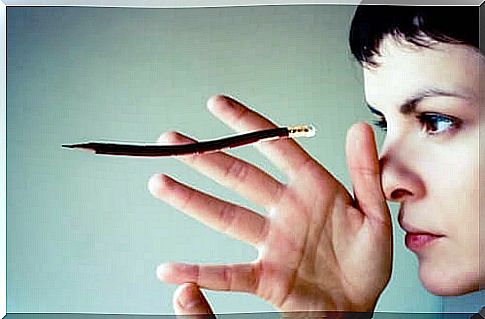Positive Reframing: How To Look At Things From Another Angle

Sometimes being able to see things from another point of view improves our ability to deal with difficulties. Positive reframing is an example of this and how, by rethinking certain aspects or dimensions, the confusion, discomfort and tension we have with the people around us are reduced. It is a very useful resource that we can all use.
However, there is one thing we have to admit. Applying this type of mental craft is difficult for us. People tend to be stubborn in their interpretations. Stubborn in our assessments of certain situations, circumstances and relationships. We do not hesitate to label this companion who is always in a bad mood or this controller obsessed with order as toxic.
Maybe this toxic person is having a bad time and having a bad time in silence. Anyone who is obsessed with order can have one of those brilliant minds that would be worth learning something from. Let’s face it, our reality has many faces and it is not good to end up with only the most negative.

Positive reframing, what is it?
Positive reframing is a technique widely used in therapy. With it, an attempt is made so that the person can see things differently and change the meanings attributed to them. The essential idea is to make him understand that the point of view that he applies to certain realities that make him suffer acts as a filter capable of blurring everything, of modifying emotions, thoughts and behaviors.
Let’s take an example. I am a person with a prominent nose or an extremely thin or short person. Beyond working on my self-esteem or my self-acceptance, I also need to be able to use a positive framework in each situation. Instead of thinking that everyone will look at me if I go to a party, I have to put that idea into perspective and focus on other dimensions. Having fun, assuming we all have our own unique set of things and that’s what makes us unique.
Should I avoid going to social events for this? Obviously not. Because these mental patterns that we apply to certain areas of our life not only limit us, they act like veterans of happiness. And if there is anything we need to be aware of, it is that a large part of us are using these mental processes. Thinking that there is only one perspective and one way of looking at things is very human.
Move from “problem frame” to “objective frame”
Positive reframing follows a very concrete process in which you have to move from negativity to a more open, constructive and hopeful attitude. To better understand it, we are going to put ourselves in another person’s shoes. Someone who has just received a very specific diagnosis: multiple sclerosis.
This particular person tells themselves that their life is over, that they will never work again and that their future is over:
- The framework problem is as follows. She assumes that this chronic disease is degenerative and that all is lost. That there is no choice but to face the end
- Well, in the therapeutic process it is essential to use a positive framing and for that we will apply the objective frame of showing the person other options. She goes from the concrete problem to a goal that acts as hope, as a means of breaking this negative pattern.
- In this case, you will focus on understanding the disease and knowing that there are options to stop it and be able to maintain an adequate quality of life.

Positive reframing does not fall into excessive optimism, it rethinks experiences to provide solutions
Positive reframing is part of the positive psychology initiated by Martin Seligman in the 90s. It is important to understand that this technique is not intended to make someone able to always see the bright side in life. This is to allow that, in the context and reality of each patient, it is possible to consider the options that exist to manage the situation and improve their life.
Something like this involves understanding that sometimes we can’t change what happens to us. If I lost my job, it is lost. If I have been diagnosed with an illness, the proof is this and no other. However, the positive reframing allows me to see what approaches I can consider to face and deal with these facts.
This is to weaken the negative and defeatist bias that trapped me to feed my gaze on other possibilities. Other perspectives to improve my motivation and the possibility of better managing these already complex circumstances. Thanks to this resource, I find emotional calm. Mental clarity and I can redefine the meaning I give to certain things.
To conclude, this technique of restructuring cognitions (thoughts) is a tool of life that we must make our own. It’s a way to move a little better in these tough days than we might have. Likewise, if it is not possible for us to do it ourselves, it is always advisable to consult a specialized professional. Let’s keep this in mind.









